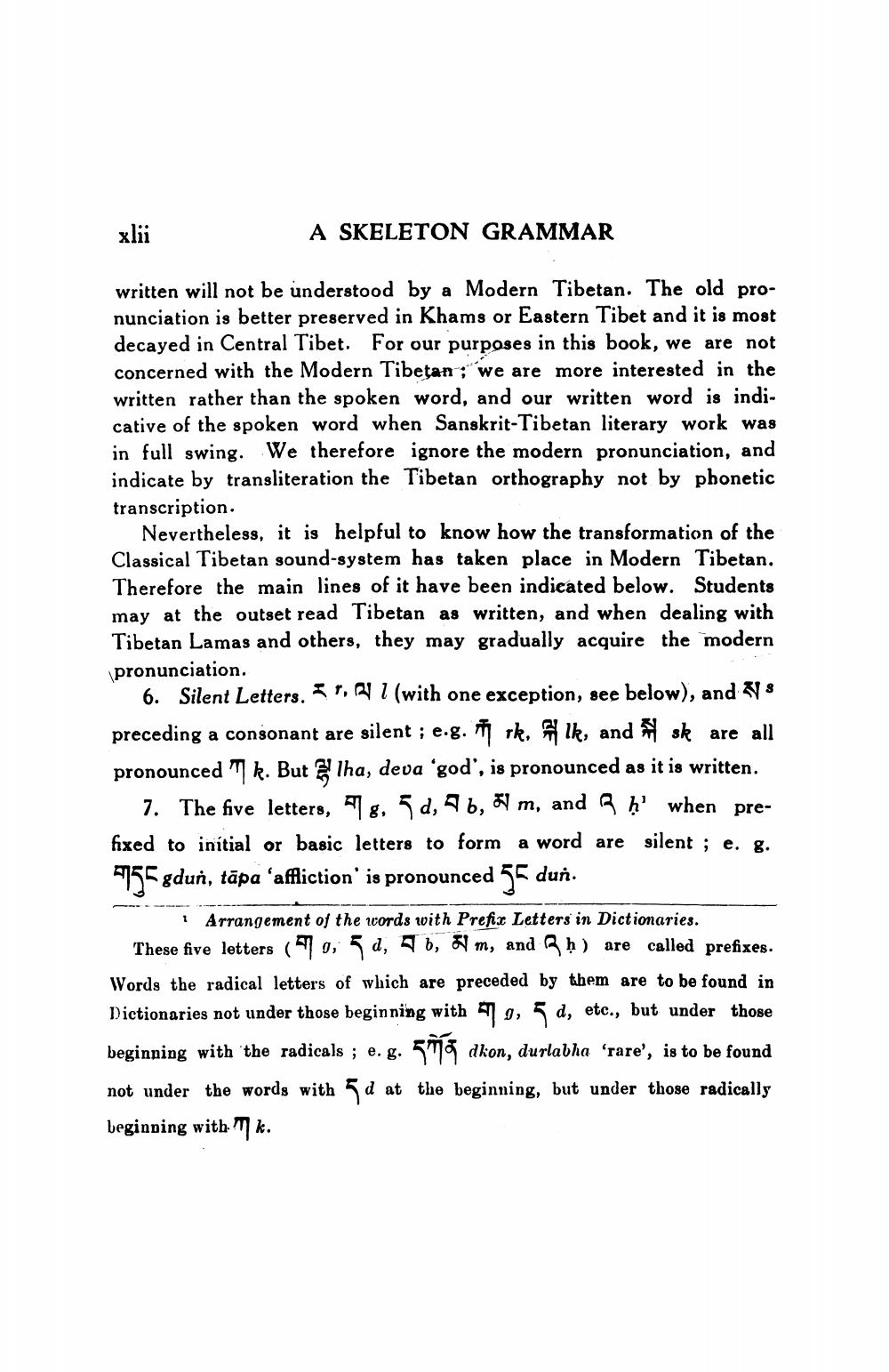________________
xlii
A SKELETON GRAMMAR
written will not be understood by a Modern Tibetan. The old pronunciation is better preserved in Khams or Eastern Tibet and it is most decayed in Central Tibet. For our purposes in this book, we are not concerned with the Modern Tibetan; we are more interested in the written rather than the spoken word, and our written word is indicative of the spoken word when Sanskrit-Tibetan literary work was in full swing. We therefore ignore the modern pronunciation, and indicate by transliteration the Tibetan orthography not by phonetic transcription.
Nevertheless, it is helpful to know how the transformation of the Classical Tibetan sound-system has taken place in Modern Tibetan. Therefore the main lines of it have been indicated below. Students may at the outset read Tibetan as written, and when dealing with Tibetan Lamas and others, they may gradually acquire the modern pronunciation.
6. Silent Letters. 51, Q1 1 (with one exception, see below), and V8 preceding a consonant are silent ; e.g. i rk, lk, and sk are all pronounced k. But lha, deva ‘god', is pronounced as it is written.
7. The five letters, 48, 50, 96, 8 m, and ņ' when prefixed to initial or basic letters to form a word are silent ; e. g. 4755gdun, tāpa 'affliction is pronounced 55 dun.
Arrangement of the words with Prefix Letters in Dictionaries. These five letters (79; 5 d, Ab, om, and h) are called prefixes. Words the radical letters of which are preceded by them are to be found in Dictionaries not under those beginning with 79, 5 d, etc., but under those beginning with the radicals ; e. g. 5 5 dkon, durlabha 'rare', is to be found not under the words with 5 d at the beginning, but under those radically beginning with Tk.




